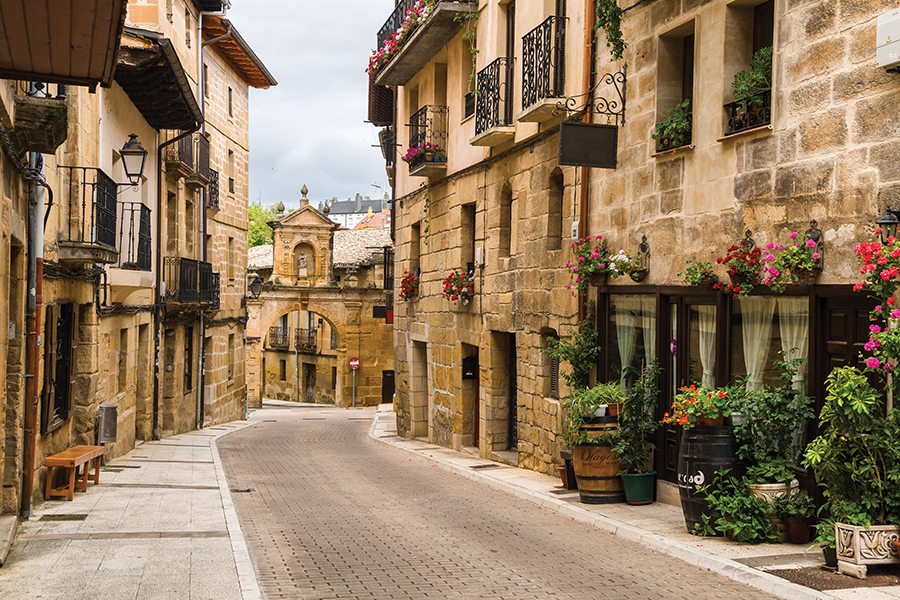An old-world country that delivers wines with a new-world spirit.
By Matthew Debord
HQ 108 | WINTER 2020
It’s a big world, but when you get right down to it, there are but three truly great wine-drinking and wine-producing countries: France, Italy and Spain.
Before anyone from the U.S. gets their nose knocked out of place, I’ll add an asterisk: California is basically a country in terms of this list. But of course, California is a state; and while other states produce good wine, France, Italy and Spain have been in the business of wine as a point of national pride for centuries.
Of those three, I think Spain is the worthiest of exploration if you’re on the lookout for an “old-world” country whose wines are “new-world” in spirit. In a word, the wines of Spain are cool.
As with France and Italy, you have a wide range of reds and whites to choose from, but the reds predominate. So, let’s take a quick gander at the whites first.
You’ll usually find two Spanish whites at most U.S. wine shops: white Rioja and Albariño. Of these, Albariño should be more common. It’s a wine that comes from Spain’s damp, verdant northwestern corner, a region called Galicia. In my book, it has three things going for it. First, it’s delicious and a fine alternative to Sauvignon Blanc and Chardonnay. Second, it’s relatively inexpensive, with bottles typically going for $10-$30. Third, it pairs well with many different foods, from traditional Spanish tapas to grilled chicken and pork. My personal favorite is from a producer called Martin Codax. The bottlings can be found in stores and online for about $15.
The wine itself is refreshing without being too zingy, with a smooth texture and flavors that tend toward peaches, pears and apricots. If you can’t locate that label, don’t worry. Like Pinot Grigio, Albariño is a wine that tends to be sort of similar from producer to producer. And the level of quality, in my experience, is consistent no matter whose name is on the front.
Now, onto the reds. The best-known region is Rioja, in the central-north part of Spain. The wines here can range from a basic regionally identified bottling through young wines, known as “Crianza,” followed by Reservas and Gran Reservas. All are predominantly vinified from the Tempranillo grape.
I recommend going straight for the Reservas because at anywhere from $25-$40 per bottle, the quality and the value are stunning. If you want to get hooked on Spanish wine, this is the place to start. Reserva Riojas get a year of oak barrel aging and then a further two years of bottle aging. This creates wines of richness, power, nuance and structure. They also go very well with steaks.
Gran Reservas are pricier but more or less the same, simply pushed to a higher level. If you like big California Cabernets and major-league French Bordeaux, Gran Reservas are in your wheelhouse; they’re aged for two years in barrel and three in bottle.
If Rioja is reliable and historic, then Ribero del Duero is a bit newer to Spanish wine enthusiasts outside Spain. South of Rioja, the main red grape in Ribero is also Tempranillo. But the wines are made with French grapes, especially Cabernet, giving them a cosmopolitan vibe that counters the traditionalist nature of Rioja.
Spain’s most famous wine internationally comes from this region. It’s called Vega Sicilia, and it’s often compared with the first-growths of Bordeaux. The top label is Unico, and it’s aged for 10 years; the current vintage is 2009. And it’s a crazy bargain, at between $300-$400. You could argue that it’s the best wine in the world at that price.
Near Rioja is Navarra, which I think of as the Rhône to Rioja’s Bordeaux. Navarra’s wines utilize both Tempranillo but also Grenache (Garnacha in Spain), and they’re both simpler and more rustic in style. If you really get into Spanish reds and gravitate logically toward Rioja and Ribero, you might want to keep some house quaffers around, and Navarra has you covered.
You might as well also try some of the more recognizable varietals, such as Merlot and Cabernet Sauvignon, which in Navarra take on an Iberian flair.
Spanish wines from any of these regions are typically excellent choices on restaurant wine lists.
The quality-to-price ratio is very much in the favor of the buyer, even with restaurant markups. Milliliter-for-milliliter, a Gran Reserva Rioja is going to give you what a red Bordeaux or California Cabernet does, but you pay half as much, and often do better than that.
If Spanish reds in particular have one flaw (and it isn’t a flaw, really, just a caution), it’s that they can be deeper and roastier in flavor than comparable French and Italian wines. Some drinkers miss the bright fruit. But Spain is a hot, dry country, so that flavor profile is a consequence of weather. And when you’re washing down a thick, grilled steak with a bottle of Rioja, the richness probably won’t bother you too much.




